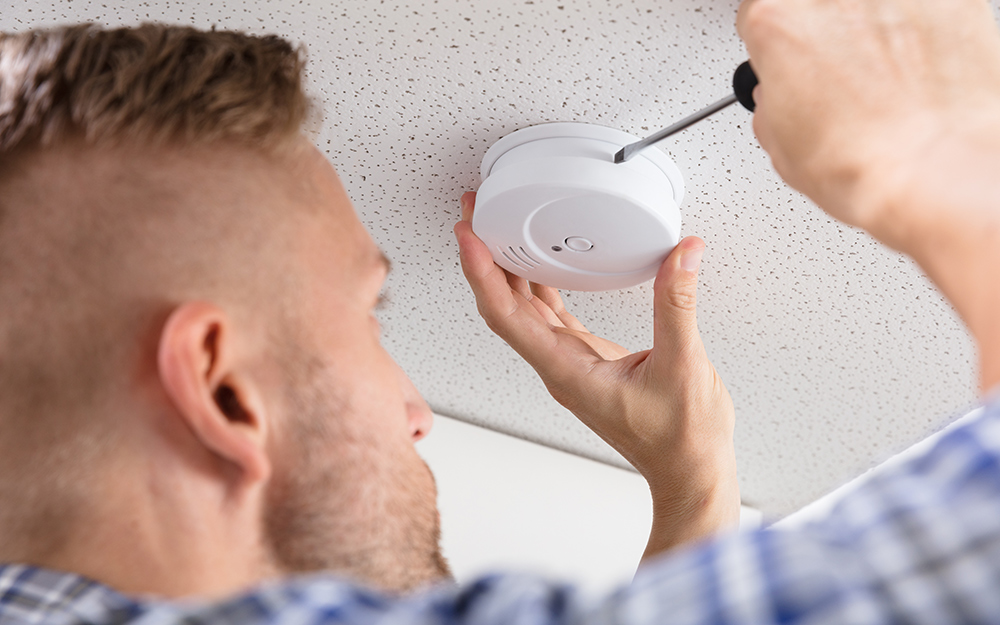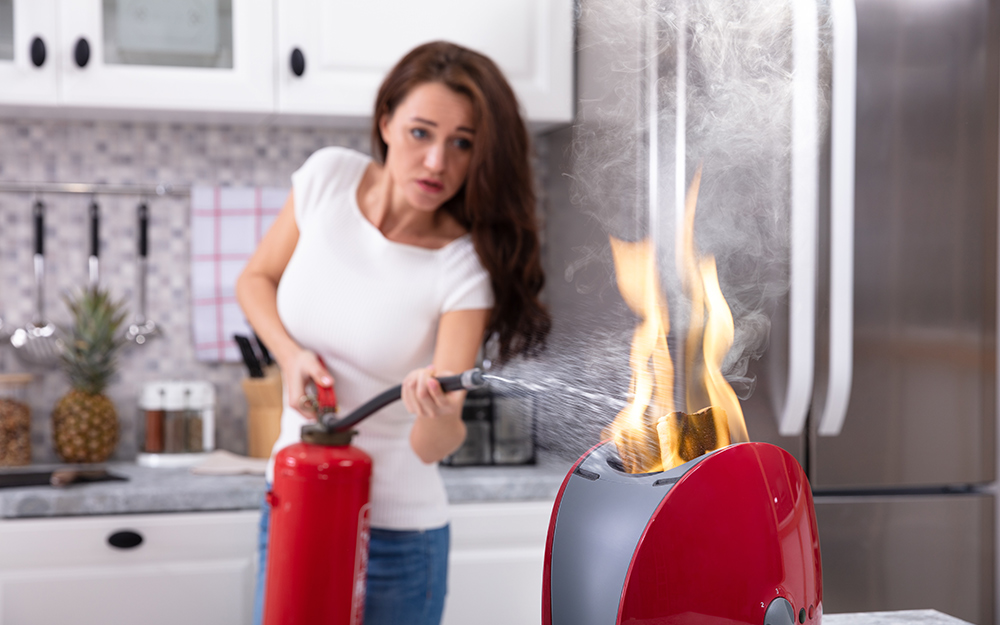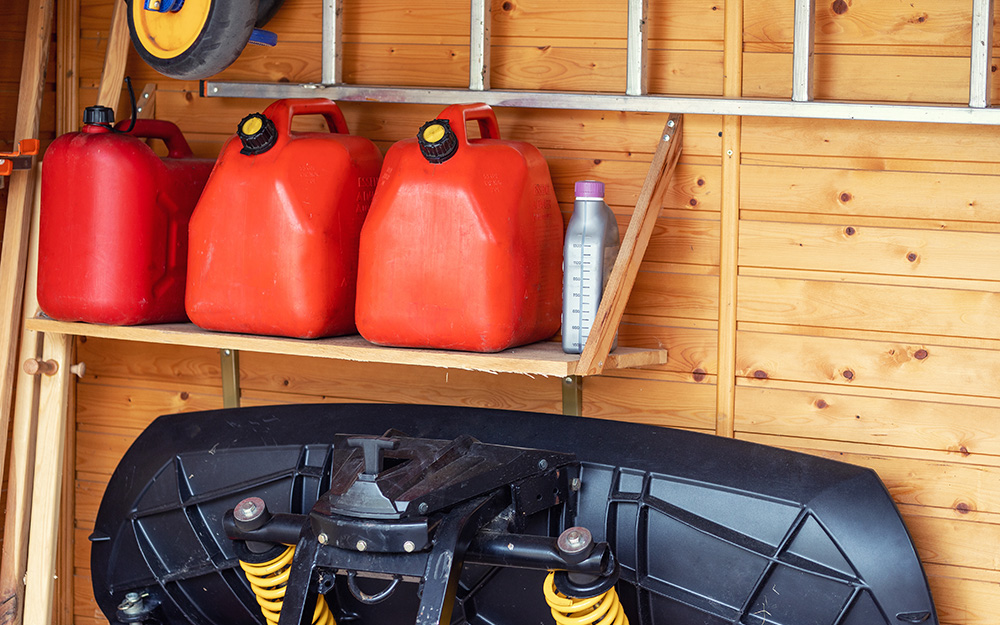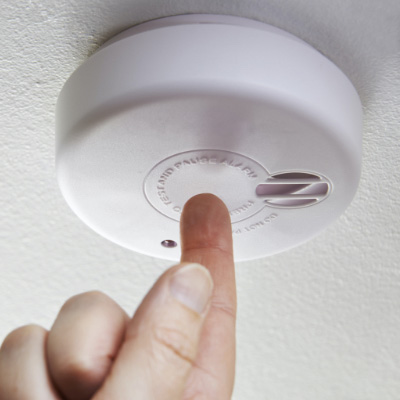Home Fire Safety Guide

Last updated April 1, 2024
According to the National Fire Protection Association, home structure fires caused an annual average of $6.5 billion in property damage. There was also 2,560 civilian fire deaths from 2012-2016. Learn more about home fire safety including how to protect your home. Making a plan and acquiring proper fire safety equipment will help prevent fire mishaps.
Difficulty:
Beginner
Duration:
Under 2 hours
Table of Contents
Make a Fire Emergency Plan
Install Smoke Detectors
Acquire Fire Extinguishers
Acquire Fire Escape Ladders
Reduce Potential Fire Hazards
Make a Fire Emergency Plan

Make a home fire safety plan so your family can escape your house safely.
- Begin by making a diagram of the house or apartment building and identifying two escape routes from every room, such as by a door and by a window.
- Teach children what the smoke or carbon monoxide alarms sound like and how to react to them, especially if a fire breaks out in the middle of the night.
- During an evacuation, if you suspect a fire is on the other side of a closed door, feel the top, edge and doorknob for heat. If hot to the touch, do not open, but use the secondary exit. Never open a hot door during a fire.
- If you have to go through a smoky room or hallway, cover your nose and mouth and keep low to the ground to prevent smoke inhalation. The best air is 1 to 2 feet above the floor.
- Remember to stop, drop and roll if your clothes catch on fire.
- Include house pets in your escape plan.
- Make sure the escape plan includes a safe place for meeting outside the house, such as by the mailbox, and designate someone to call the emergency services.
- Once you’ve left a burning house, don’t go back in, just wait for the local fire department.
- Stage regular drills to ensure your family's emergency preparedness.
- Post the plan in a clearly visible place, such as the kitchen.
Install Smoke Detectors

More than half of all residential fire fatalities occur in homes without smoke detectors, so make sure your home is properly equipped.
- Install smoke alarms on every floor of the house and in each bedroom.
- Smoke rises, so place smoke alarms high on walls or on ceilings.
- Change batteries every year or immediately when the low battery signal begins to chirp. Definitely do not disable a chirping alarm with the intention of replacing the new battery later: you might forget, placing your home in jeopardy.
- Choose a day every year for changing the smoke alarm batteries, such as the autumn day when Daylight Savings Time “falls back" and you reset your clocks.
Tip: Install carbon monoxide detectors in all of your home’s major rooms, between knee and chest height.
Acquire Fire Extinguishers

Keep a fire extinguisher in your kitchen and at least one for each floor of your home. Familiarize yourself with the rating system of home fire extinguishers before acquiring one:
- Fire extinguishers with a Class A rating are effective against paper, wood, textiles and plastics.
- Fire extinguishers with a Class B rating are effective against flammable liquid fires that may involve cooking oil, gasoline, paint or other substances.
- Fire extinguishers with a Class C rating are effective against “live” electrical equipment.
To properly operate a fire extinguisher, remember the acronym “PASS” for:
- Pull the pin to release the lock, pointing the nozzle away from you.
- Aim the extinguisher low, at the base of the fire.
- Squeeze the lever slowly and carefully.
- Sweep the nozzle from side to side.
Tip: Mount fire extinguishers 4 to 5 feet from the floor to be in easy reach. Do not store a fire extinguisher close to the stove.
Acquire Fire Escape Ladders

An important home fire safety tip for those with more than one story is to have a fire escape ladder in each top-story room.
- Store the ladders next to windows for easy access and make sure young people, the elderly and people with disabilities can use them or have a contingency plan.
- Make sure that windows and screens open easily and are not painted shut.
Reduce Potential Fire Hazards

House fire prevention starts with eliminating the risks. Inspect your entire home for potential fire hazards.
- Make sure electrical outlets are not overloaded or exceed the safe number of plugs in use (especially at Christmas or other holidays).
- Make sure power cords, extension cords and other wiring is not frayed, damaged or improperly placed.
- Dryer ducts should be cleaned annually to avoid the accumulation of flammable lint.
- Gasoline and other flammable liquids should be stored in containers such as gas cans and only in appropriate areas.
- Chimneys should be inspected annually and cleaned regularly to avoid buildup of flammable creosote.
- Make sure that space heaters are used according to instructions.
- Store matches, lighters, cigarettes and other smoking accessories out of reach of children.
Being aware of home fire safety tips and learning how to prepare for a fire emergency are essential to make sure you can keep your loved ones – and yourself – as safe as possible.
Download The Home Depot Mobile App to shop all fire safety and home fire prevention products.



























